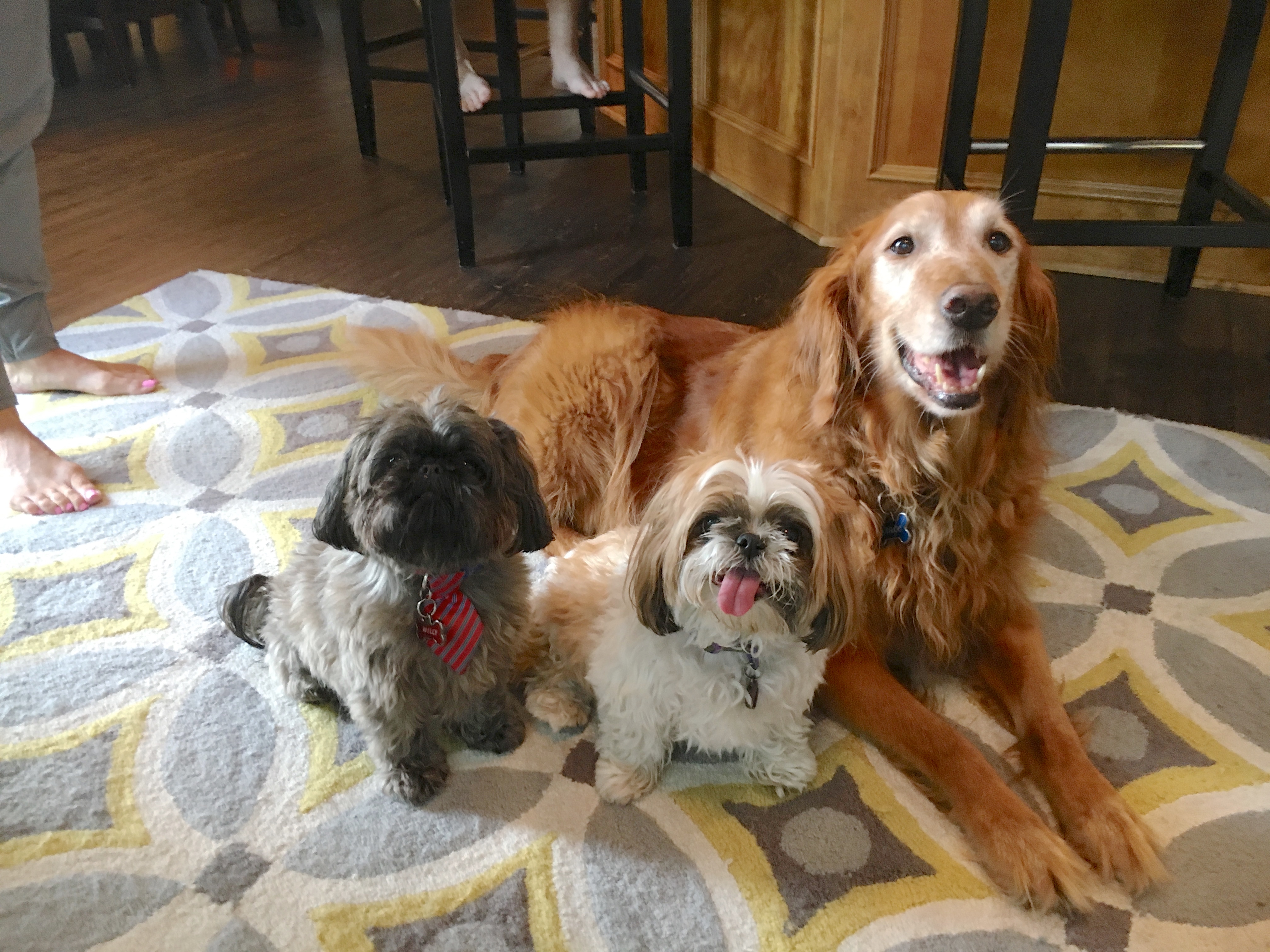Tips to Stop a Trio of Dogs From Marking in the House
By: David Codr
Published Date: July 21, 2017
Willy (left in red tie) is a two-year-old Shih Tzu who was adopted into a home that included twelve-year-old Zoey (center) and nine-year-old Golden Retriever Chloe in Bennington, Nebraska. The dog’s guardians were desperate to set up a dog behavior training session to stop the dogs from having marking or having accidents in the home.
The dogs were excited when I arrived for the session, but nowhere near the top of the excited chart, at least from my personal experience working as a dog behavior expert.
When we sat down to discuss the dog marking and accidents in the house, I noticed that the little dogs literally walked across their guardians any time they wanted attention and Chloe would nudge or invade personal space as her way of asking.
It wasn’t hard to see why the dogs acted this way, any time they did these things, the humans instinctively reached over to pet them.
While petting a dog is a good thing and the foundation of positive dog training, petting a dog at the wrong time can send the opposite message of what you intend. To help the guardians start adding structure to this repeating interaction, I went over my Petting with a Purpose method.
The longer I observed the dogs and humans together, the more I became convinced that the accidents in the house were actually a case of marking. Without any real rules in place, the dogs saw themselves as equals to their humans, or perhaps even as their leader.
Its possible that one of the females is urinating where another dog is marking so I spent a few minutes going over some remedial potty training tips.
But if the issue is dog marking as I suspect, the remedial potty training will only help with dogs who are simply going there because it smells like the place to go as other dogs have done the same.
Stopping dog marking is all about changing the leader follower dynamic so the dogs identify as a follower. Once this transition takes place, it becomes inappropriate to mark, in the dog’s mind.
I suggested a number of rules and boundaries and showed the guardians how to enforce them. Consistently enforcing these rules will go a long ways towards the dogs seeing the humans acting like leaders. This will need to happen consistently before the marking dogs stop that behavior.
I recored a good example of a rule and how to enforce it in the video below.
By establishing an invisible boundary and training the dogs to stay behind it, the humans will help the dogs develop more self control while simultaneously reinforcing that the human is the authority figure.
It may help for the guardians to practice establishing this boundary by microwaving a piece of roast beef and leaving it on the counter as they pretend to cook or prepare a meal. By simulating the actions in the kitchen associated with cooking, the dogs will be doing “dry runs” at this new dog behavior. Recreating situations and practicing like this is a trick many a dog behaviorist has used to fix dog problems.
By the end of the session, the dogs were showing respect for the human’s personal space, were starting to follow the new rules and even restraining themselves. It will take practice at the dog training exercises and consistent enforcement of the new rules right away before the dog’s follower mindset is strong enough to compel them to stop marking furniture or having an accident on the floor.
We wrapped things up by shooting a Roadmap to Success video with highlights of all the positive dog training tips and dog behavior secrets I shared in the session.
Categorized in: Dog Behavior


